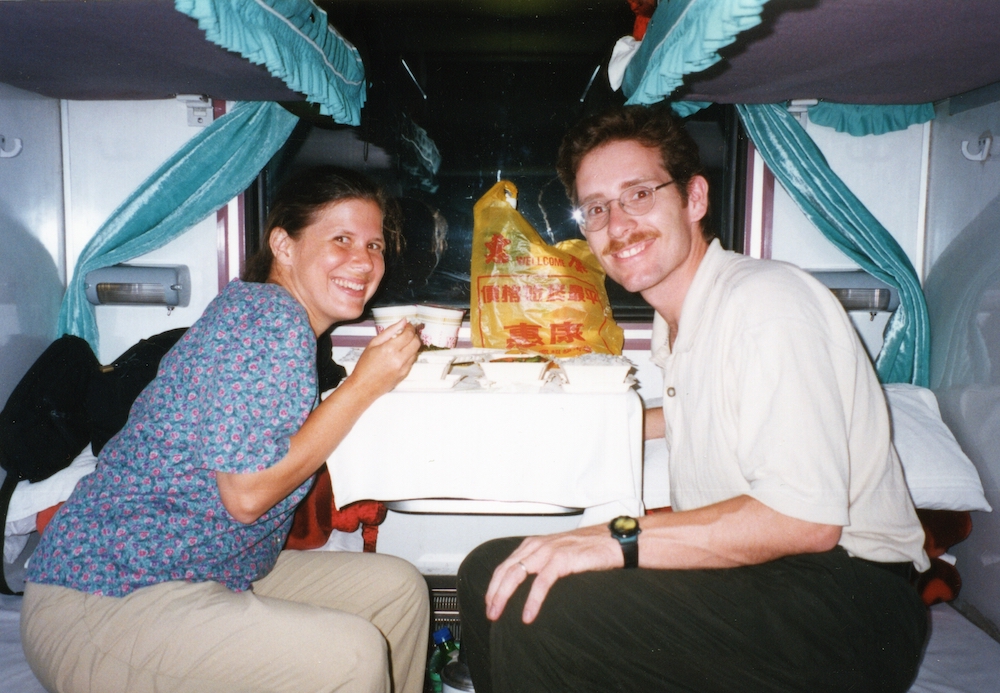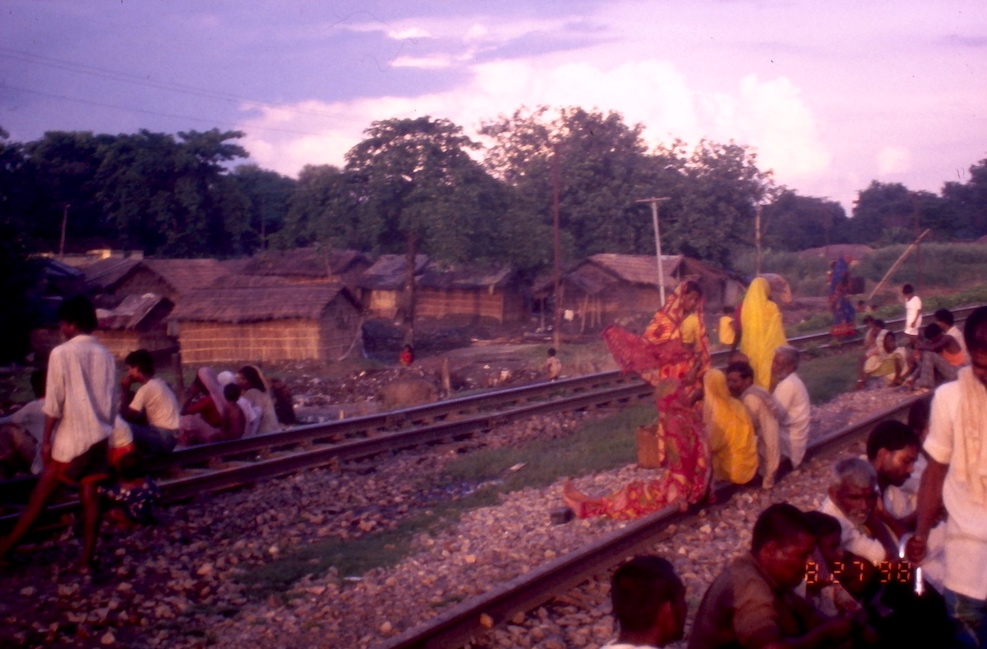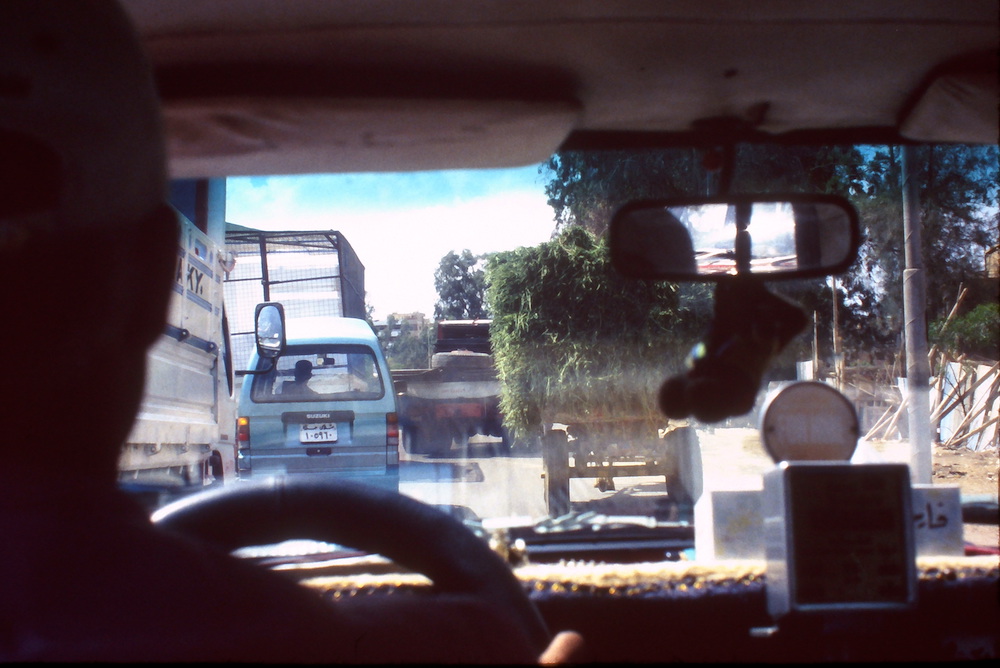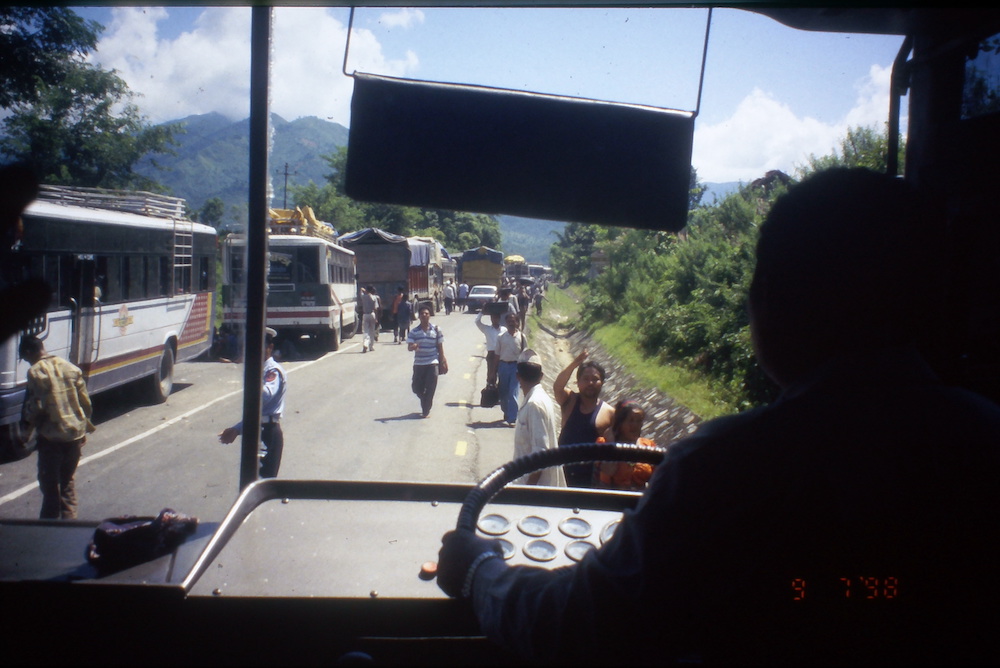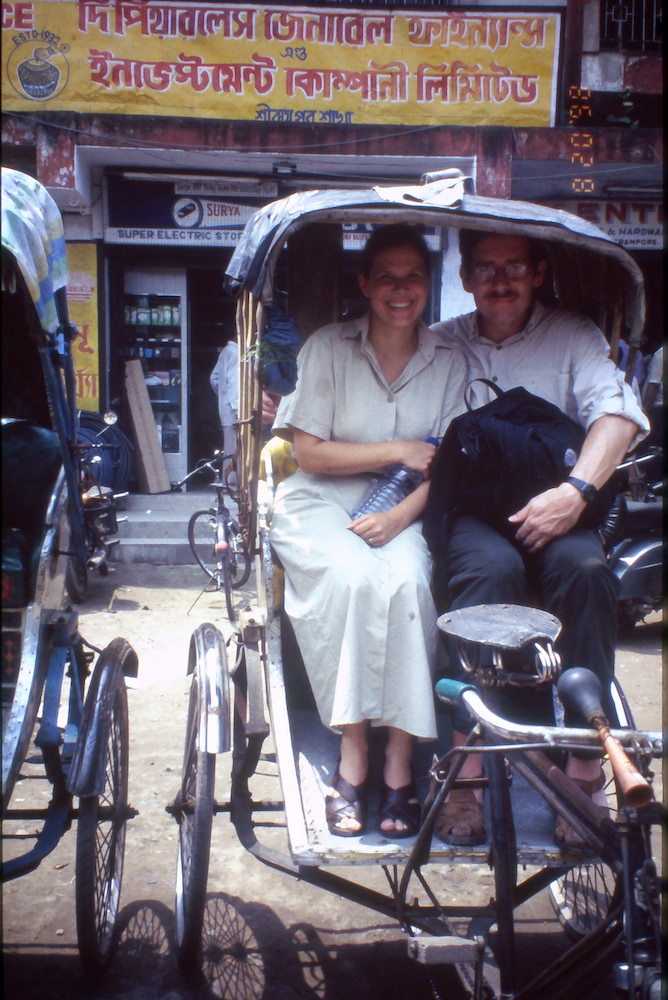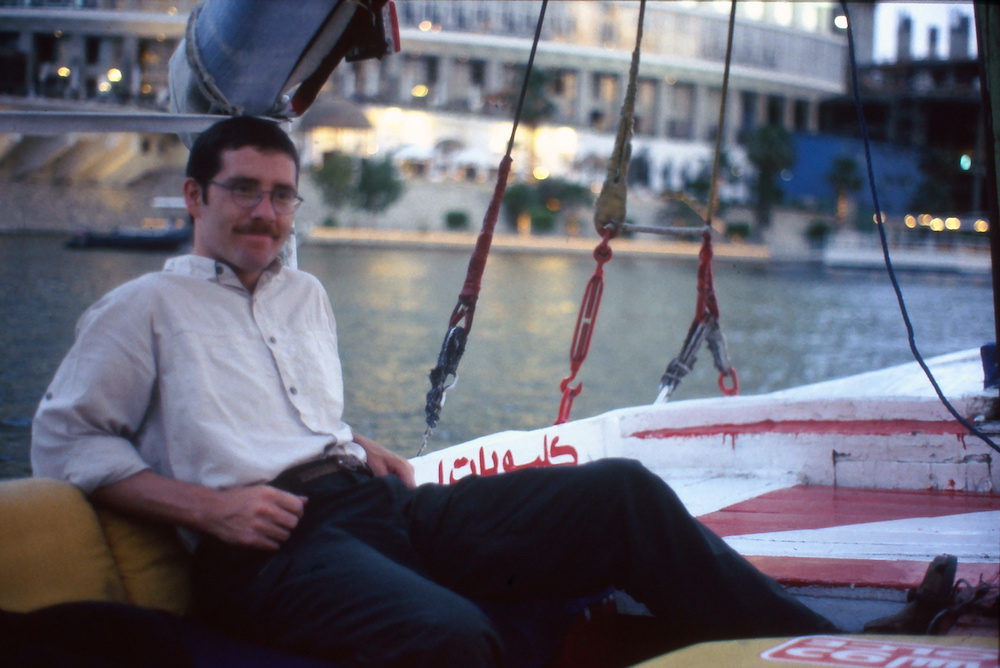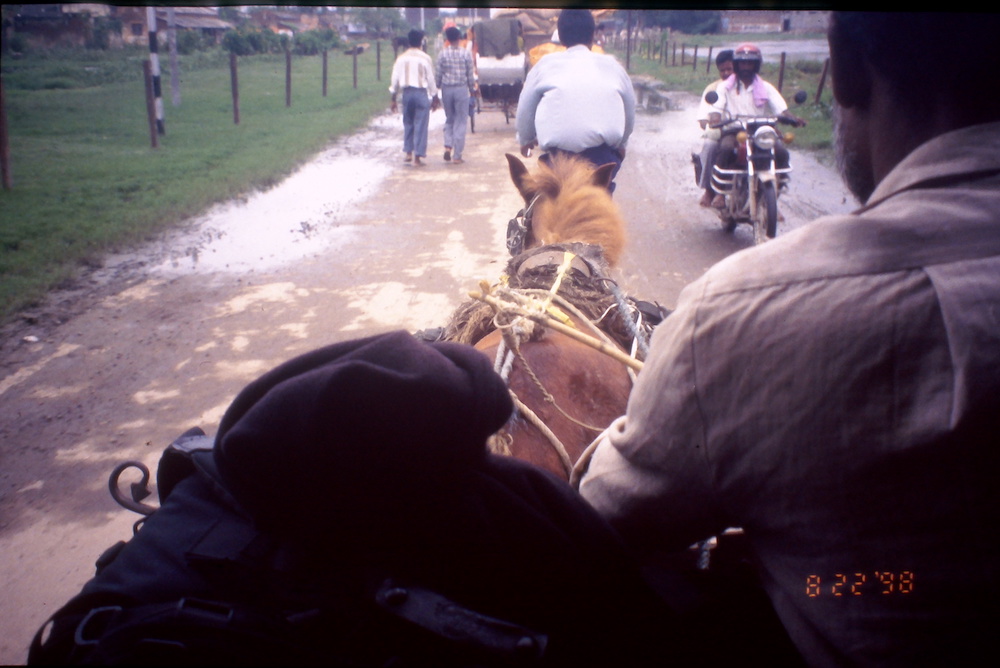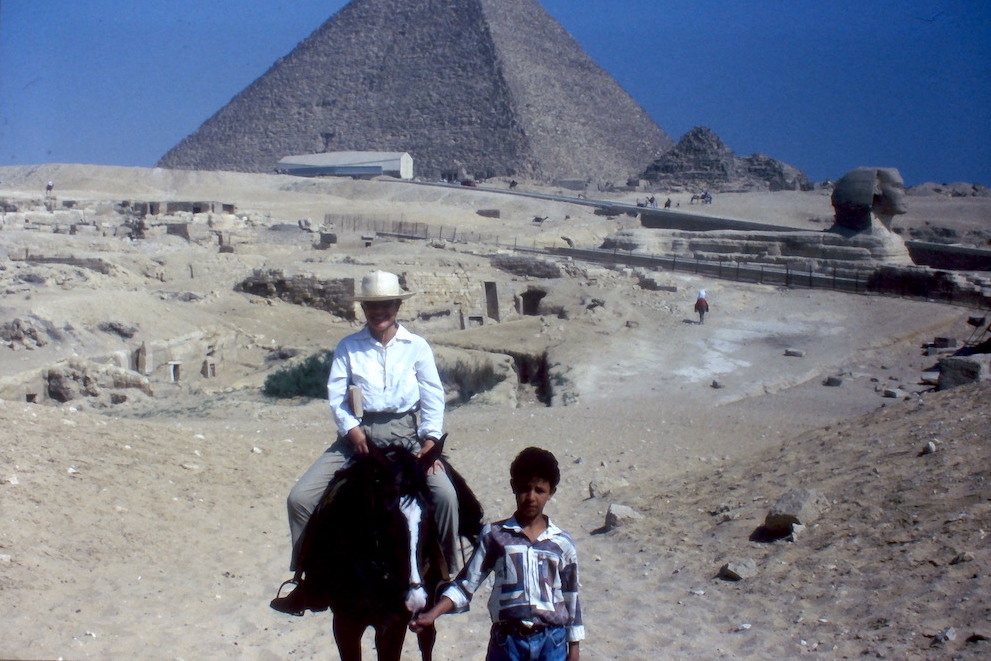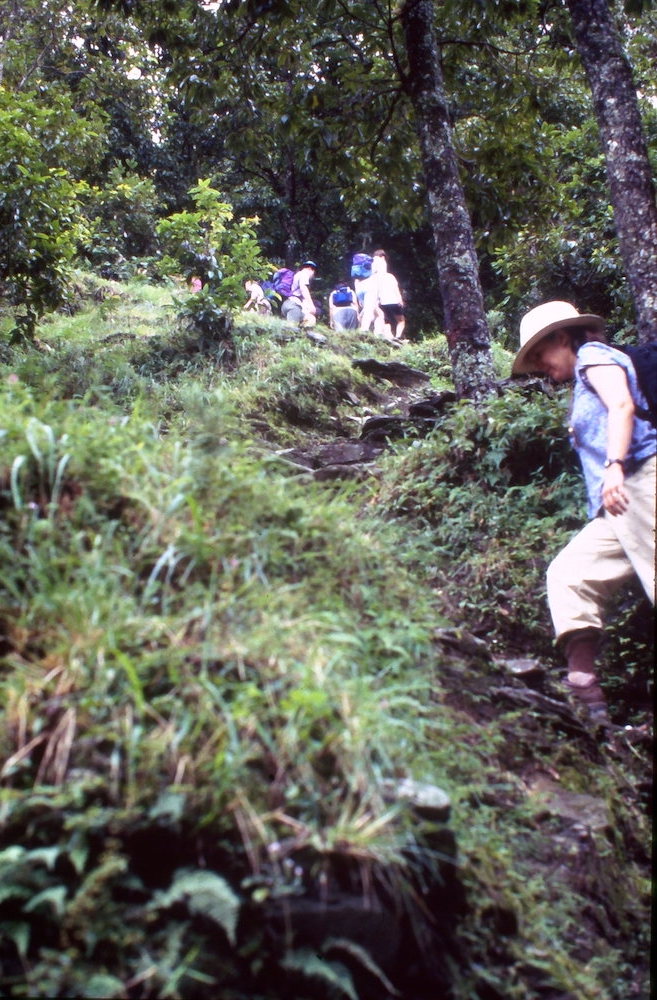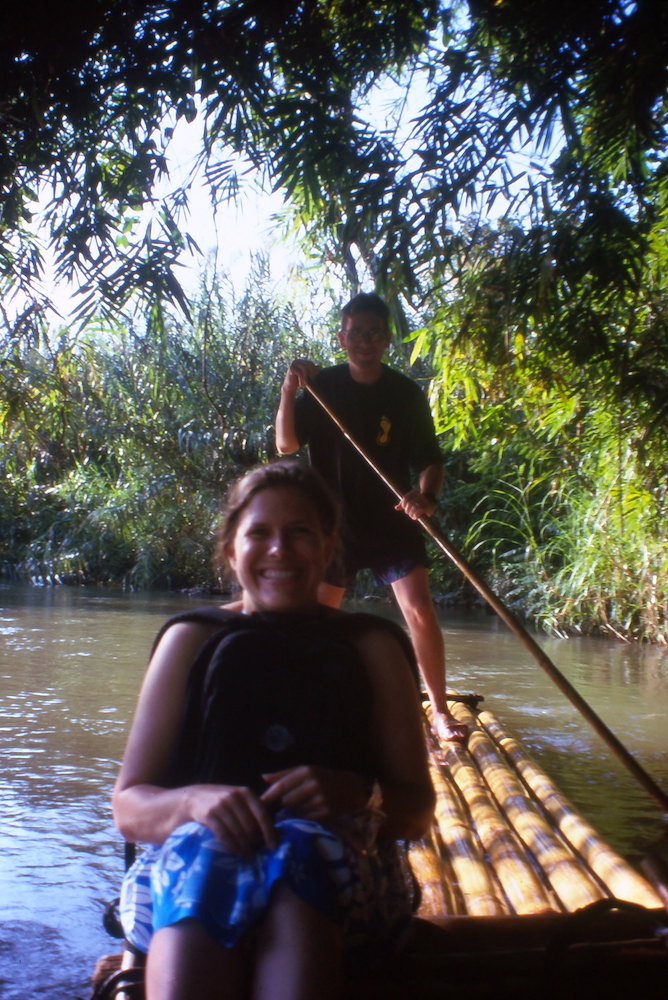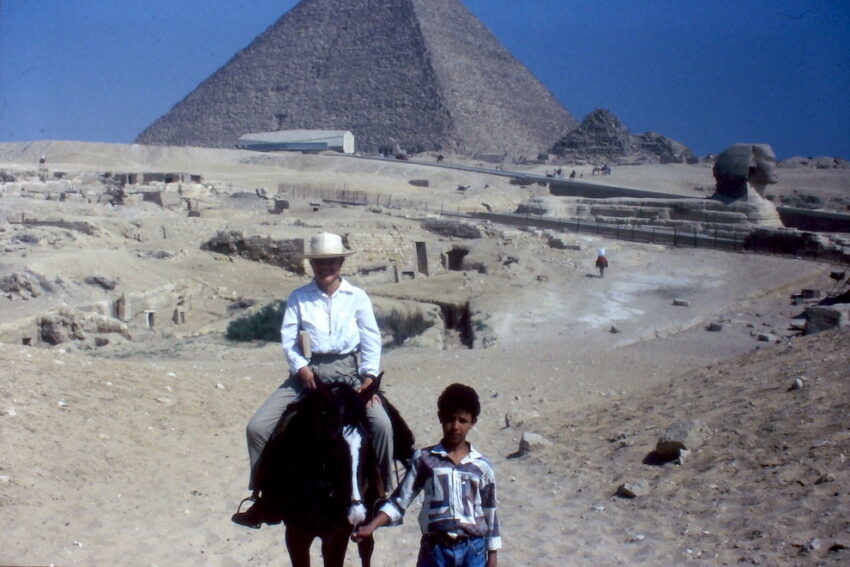When someone asks me “How did you travel around the world?” I dryly, but truthfully, respond: “Mostly lanes, trains and automobiles, but also by ferry boats on the sea, busses with chickens, motorcycles through rice fields, an urban funicular, horses and camels in the dessert, elephants in the jungle, tuk-tuks through traffic jams, bamboo rafts down a river, and even on foot in the Himalayas.” Then, if they really want to know about how we planned and executed our trip, I’ll give them some of the details, until their eyes either glaze over in boredom, or twinkle with the birth of a dream of their own.
3/27/98: Strolled through parts of the Monastiraki and Plaka neighborhoods.
3/27/23: The adrenalin rush that comes with stepping into any big moment or event eventually subsides, so on the third day of our trip it was beginning to sink in that we were really doing this. There would be plenty of real-time logistical work in the future of the trip, but our year of planning and preparation paid off every step of the way, making the on-the-fly decisions a lot easier than they would have been otherwise. Ruth gets the credit for this. We both like adventure and are willing to take risks, but she’s the one who is disciplined in counting the cost, while I am one who tends to throw caution to the wind.
And counting the literal cost was, surprisingly, one of the most encouraging things we did in the year of planning. The research we did into the cost of travel, food, housing, film and more, revealed that the trip would be well within our financial grasp if we did make sacrifices to our basic living expenses. We had the benefit of having no existing debt, partly a life-style choice we had both made independently, but also the result of the social privileges we both were born into. Making the trip a financial reality, once we committed to it, became a choice between luxuries such as eating out or eating in, going to the movie theater or staying home to read a book.
For example, as a single man, I had been in the habit of daily visits to the vending machine for a beverage and candy/snack, to the tune of about $3 per day, and that’s beside regularly eating lunch at fast-food joints 2-3 times per week at about $7 per. Over the course of 1 year that adds up to about $1,800! Going to the movies with friends once a week costs about $60 per year, throw in eating out before or after the movie and that was easily another $200-$300 per year. Similarly, I had been spending $150 per month on gas, and about $400 per year to insure a car and a motorcycle, which adds up to $2,200 per year. I found that luxuries (movies, eating out, etc) and conveniences (like the car and motorcycle) were costing over $5,000 per year. The discipline to save that instead of spending it, made up for fully 20% of what it would cost to travel around the world for one year!
That’s right, in 1998, the cost of a year-long, round-the-world trip only cost us about $24,000. A luxury to be sure, but when we started counting the costs of the luxuries we weren’t really thinking about as luxuries, along with making sacrifices to some of the conveniences we were taking for granted, and also realizing the benefits of having two incomes in one household of two people focused on the same dream, making choices was really the only thing between us and that dream. So, we made the choices. And it turns out, it only took a little time before we got comfortable with living more frugally. Once we got past our sense of entitlement to those luxuries and conveniences, it became increasingly easier to embrace the value of what we were embarking upon and how we would grow through the discipline of the adventure.
If it sounds impossible that it only cost $24,000 to travel around the world, I can show you the receipts. But really, it is easier to just share info on the expense of air-fare. Research led us to ticket consolidators, or “bucket shops.” These businesses are a sort of travel agent that specialize in purchasing unused seats on flights all around the world, and reselling them as single, 1-way flights, rather than the round-trip flight ticket more regularly sold to consumers by any given airline. As the backbone of our trip, we purchased ten one-way tickets that would get us to main destinations: Athens – Cairo – Harare – Nairobi – Mumbai – Bangkok – Hong Kong – Jakarta – Honolulu – Los Angeles. Once on the ground in these locations we booked other local transit (planes, trains, busses, cars, etc) as needed. The combined cost of these two 10-stop flight itineraries, was about $3,000 in 1998. The additional transportation costs brought our actual transportation expenses for the whole year to around $10,000. That is less than what the average household spends annually on transportation costs (car loans, insurance, fuel, repairs, etc) without travelling, so you can see how a trip around the world becomes plausible in terms of costs.
For any who might be inspired to plan their own adventure, I just now plotted a near identical itinerary with AirTreks, and the cost today for the same 10 stops ranges from $5,300-$7,000. That is a lot of money, but I still find it surprising how little that amounts to when you consider that you are traveling to ten international cities for that price!
Anyway, with research, caution and frugality, we kept our total cost for a year-long, round-the-world trip to well below what it was costing us to live in Chicago for the same length of time. Of course, while we were “spending less” than at home in Chicago, we also had to plan for the fact that we would be working as volunteers while travelling, and not earning a living! But that’s another conversation…
- Round-The-World Travel Guide
- World Travel Library
- AirTreks (RTW airfare consolidator)
- GORP – Great Outdoor Recreation Pages
- Lonely Planet Online (great travel guides)
- CDC Travel info
- DOS/CA: Travel Warnings & Infor Sheet
- Traveller’s Point (plot a personal map of your trip)
